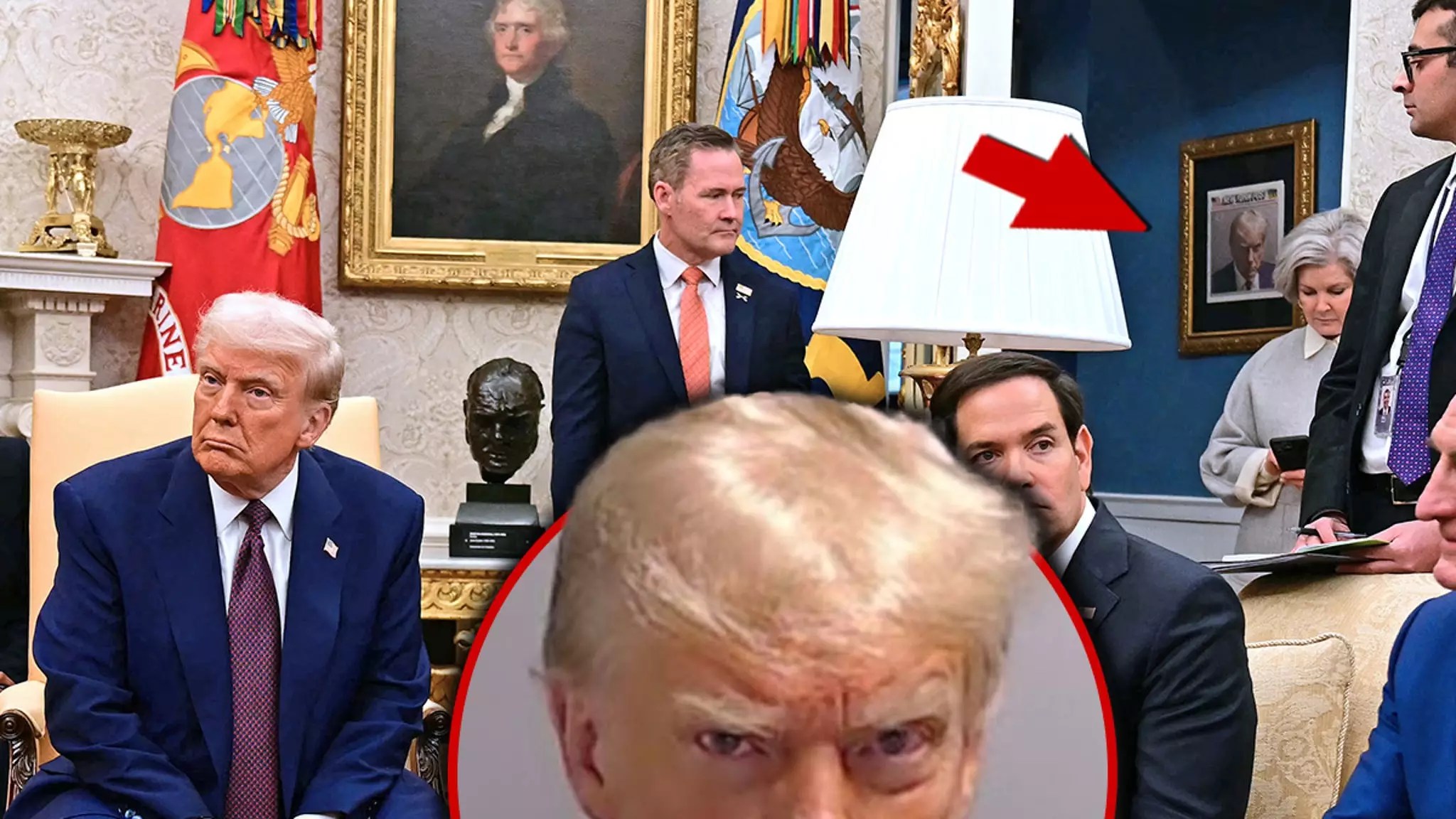The photo of Donald Trump’s mug shot hanging just outside the Oval Office is a bold and unconventional move in the realm of presidential imagery. The decision to showcase this controversial image speaks volumes about Trump’s approach to his public persona, as he skillfully transforms an emblem of legal trouble into a symbol of defiance and resilience. The president’s ability to spin his legal woes into a narrative of persecution has garnered widespread attention, igniting discussions about the role of personal branding in politics.
The visual landscape of the Oval Office usually evokes a sense of solemnity, tradition, and history, often adorned with portraits of revered figures like Thomas Jefferson, with whom Trump shares a complex relationship. However, juxtaposed against this rich historical backdrop is Trump’s recent decision to display a framed copy of the New York Post featuring his mug shot. This juxtaposition illustrates a striking departure from decorum, merging modern controversies with the lineage of American presidential history. The choice of decor can serve dual purposes—almost a reflection of Trump’s self-designed narrative of battling the system, while simultaneously challenging the dignified standards typically associated with the office.
Trump’s mug shot has transcended ordinary legal encounters, morphing into a powerful merchandising tool. From hats to T-shirts, his campaign has effectively branded the image, fostering a sense of community among supporters while capitalizing on perceived victimhood. By monetizing this moment, Trump not only shores up financial support for his campaign but also embeds his narrative deeper within the cultural fabric of his base. It raises an intriguing question—what does this say about the intersection of commerce and politics? By utilizing personal imagery as merchandise, Trump sets a precedent that blurs the lines of conventional political marketing.
Hanging the mug shot outside the Oval Office may also serve a strategic purpose, projecting an image of intimidation and control. By turning what is traditionally seen as an embarrassment into a badge of honor, Trump seems to be signaling to potential adversaries, emphasizing that he remains unfazed despite the legal challenges he faces. This determination could be perceived as empowering not only for himself but also for his followers, emboldening their belief in his fight against the establishment. Through such symbolism, Trump concocts an aura of invincibility, cleverly reshaping perceptions around decorum in political contexts.
Trump’s decision to feature his mug shot in the West Wing encapsulates his unique approach to presidential image-making. By crafting his own narrative around legal issues and embracing the public’s fascination with his personal brand, he pushes the boundaries of expectation in American politics. This endeavor not only reinforces his commitment to his supporters, but it also suggests a new landscape where image, merchandise, and politics intertwine in unexpected ways. Whether this will influence future presidential conduct remains to be seen, but it certainly marks a striking chapter in political history.







Leave a Reply